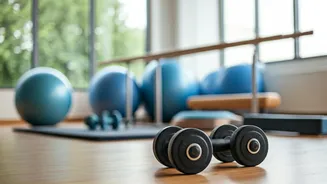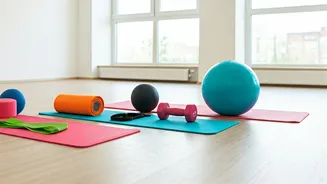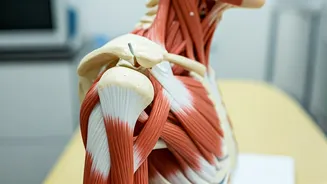Exercise's Importance for PD
Exercise plays a crucial role in managing Parkinson's disease (PD). It not only helps in alleviating the motor symptoms associated with the condition,
such as rigidity and tremors but also supports overall health. Regular physical activity can greatly boost mobility, balance, and coordination, reducing the risk of falls and promoting independence. Furthermore, it aids in improving mood, reducing anxiety, and enhancing cognitive function. Engaging in specific exercises, even in the comfort of your own home, can make a significant difference in managing PD symptoms and improving one's quality of life. The implementation of exercise is generally tailored to individual needs and abilities, ensuring safety and effectiveness.
Chair Squats: Strength Boost
Chair squats are an excellent exercise to strengthen leg muscles, which are crucial for maintaining balance and mobility. To perform this exercise, begin by standing in front of a sturdy chair. Keep your feet shoulder-width apart, and slowly bend your knees as if you are going to sit down, lowering your body until your buttocks gently touch the chair. Do not fully sit. Then, engage your leg muscles to stand back up, keeping your back straight. Repeat this movement several times. Chair squats can be modified depending on your fitness level; you can adjust the depth of the squat or the number of repetitions. The regular performance of chair squats can greatly enhance lower body strength, which is essential for walking, standing, and various daily activities impacted by Parkinson's.
Marching: Coordination and Cardio
Marching in place is a simple yet effective exercise that helps improve coordination, cardiovascular health, and leg strength. To perform marching, stand with your feet shoulder-width apart, and then lift your knees one at a time, bringing them up towards your chest, as if you are marching. Focus on maintaining a good posture and swinging your arms naturally. You can perform this exercise at your own pace, slowly increasing the speed and duration as you gain strength and endurance. Marching can be adjusted to individual abilities, and its benefits include enhanced coordination, improved cardiovascular fitness, and strengthened leg muscles. Engaging in marching regularly can help improve overall mobility and reduce the stiffness commonly experienced by individuals with Parkinson's.
Arm Circles: Flexibility and Range
Arm circles are designed to improve upper body flexibility and range of motion. Stand with your feet shoulder-width apart and extend your arms to the sides at shoulder height. Begin by making small forward circles with your arms. Gradually increase the size of the circles. After a set of repetitions, reverse the direction and perform the circles backward. Arm circles are relatively easy to do and can be adjusted based on the individual's abilities. Focus on maintaining a smooth, controlled motion. Regular arm circles help in relieving stiffness in the shoulders, improving the range of motion in the arms, and can enhance overall upper body flexibility. This exercise is helpful for everyday tasks such as reaching and lifting.
Toe Taps: Balance Enhancement
Toe taps are designed to improve balance, which is often compromised in Parkinson's disease. Stand with your feet shoulder-width apart, and gently tap your toes forward, alternating between your right and left foot. You can optionally tap your toes to the side or backward as well. To enhance balance, hold onto a chair or a stable surface if needed. Be mindful of your posture; keep your back straight and your core engaged. Performing toe taps helps improve balance and coordination, and it also aids in preventing falls. The simplicity of toe taps makes it easy to incorporate into a daily routine, providing significant benefits for mobility and stability. Practicing toe taps regularly can substantially reduce the risk of falling, which is a major concern for individuals with Parkinson's disease.











